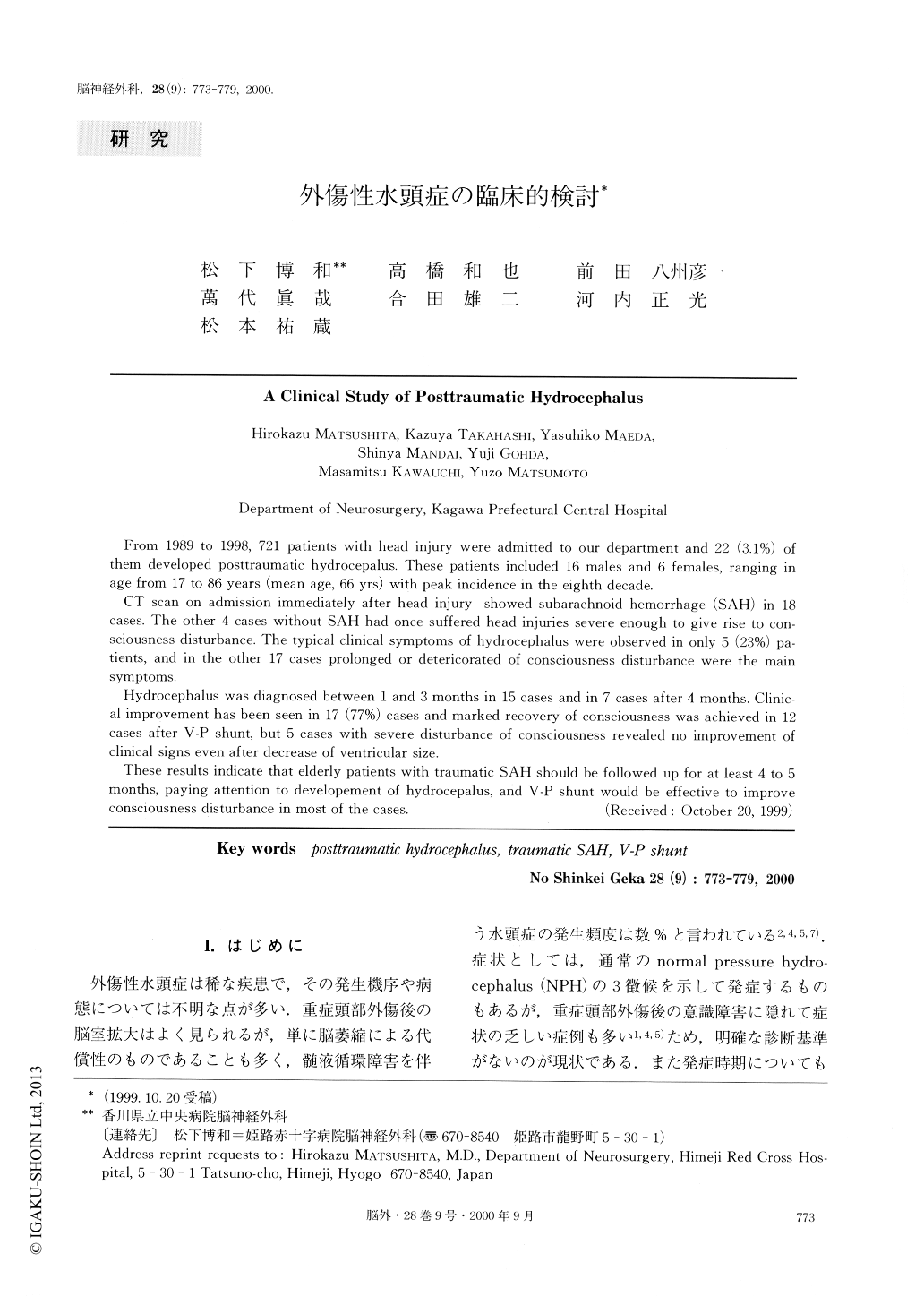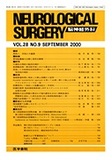Japanese
English
- 有料閲覧
- Abstract 文献概要
- 1ページ目 Look Inside
I.はじめに
外傷性水頭症は稀な疾患で,その発生機序や病態については不明な点が多い.重症頭部外傷後の脳室拡大はよく見られるが,単に脳萎縮による代償性のものであることも多く,髄液循環障害を伴う水頭症の発生頻度は数%と言われている2,4,5,7).症状としては,通常のnormal pressure hydro-cephalus(NPH)の3徴候を示して発症するものもあるが,重症頭部外傷後の意識障害に隠れて症状の乏しい症例も多い1,4,5)ため,明確な診断基準がないのが現状である.また発症時期についても意見の一致を見ていない.今回われわれは,過去10年間に当院にて経験した外傷性水頭症22例の臨床像,診断,シャント術適応について検討した.
From 1989 to 1998, 721 patients with head injury were admitted to our department and 22 (3.1%) of them developed posttraumatic hydrocepalus. These patients included 16 males and 6 females, ranging in age from 17 to 86 years (mean age, 66 yrs) with peak incidence in the eighth decade.
CT scan on admission immediately after head injury showed subarachnoid hemorrhage (SAH) in 18 cases. The other 4 cases without SAH had once suffered head injuries severe enough to give rise to con-sciousness disturbance. The typical clinical symptoms of hydrocephalus were observed in only 5 (23%) pa-tients, and in the other 17 cases prolonged or detericorated of consciousness disturbance were the main symptoms.
Hydrocephalus was diagnosed between 1 and 3 months in 15 cases and in 7 cases after 4 months. Clinic-al improvement has been seen in 17 (77%) cases and marked recovery of consciousness was achieved in 12 cases after V-P shunt, but 5 cases with severe disturbance of consciousness revealed no improvement of clinical signs even after decrease of ventricular size.
These results indicate that elderly patients with traumatic SAH should be followed up for at least 4 to 5 months, paying attention to developement of hydrocepalus, and V-P shunt would be effective to improve consciousness disturbance in most of the cases.

Copyright © 2000, Igaku-Shoin Ltd. All rights reserved.


